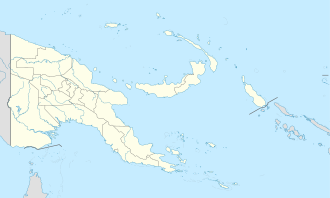| Naval Base Port Moresby | |
|---|---|
| Port Moresby, New Guinea | |
 A cargo ship being unloaded at the wharf in Port Moresby | |
| Location | |
| Coordinates | 9°25′45″S147°06′35″E / 9.429287°S 147.109722°E |
| Site history | |
| Built | 1942 |
| In use | 1942-1945 |
| Battles/wars | Battle of New Guinea |
Naval Base Port Moresby was a United States Navy base built during World War II at the city of Port Moresby on Papua New Guinea. The US Navy built a communication center and advance base headquarters for the US Seventh Fleet to support the Pacific War in 1943. The base was part of the New Guinea campaign. [1]










